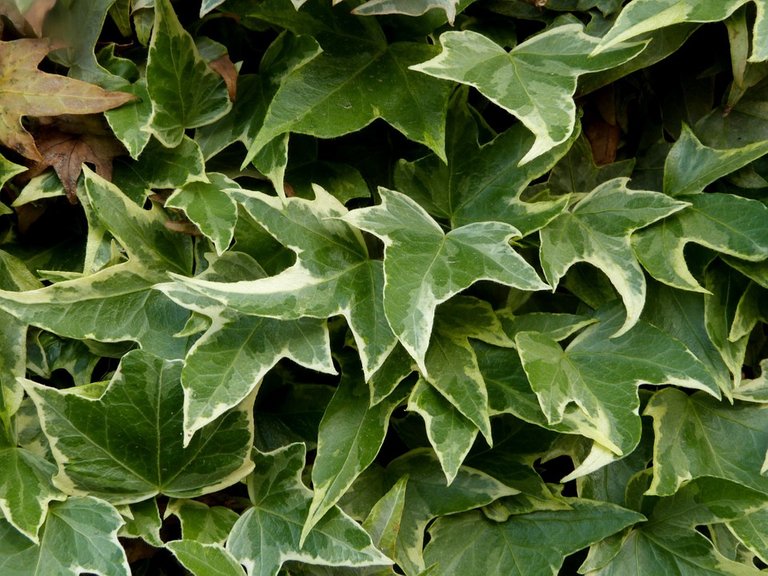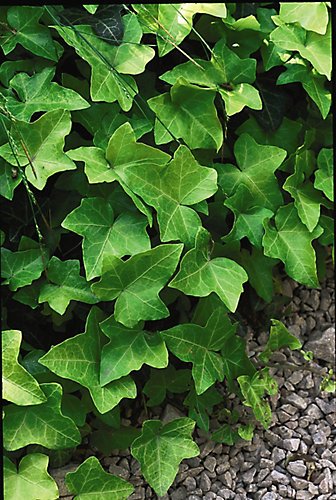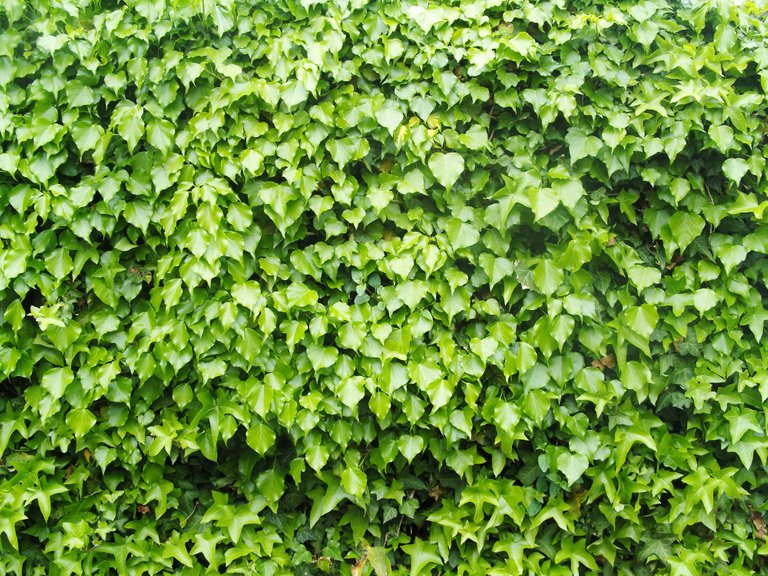Ivy plants (Hedera spp.) are popular climbing, spreading ground covers, due to their vigorous growth rate and evergreen leaves. Ivies can quickly climb up and over fences, walls and trellises. They can also help to prevent soil erosion with their deep, dense roots. Most ivy plants are grown in shady areas in regions where winters are colder. A plethora of ivy species exist, making proper identification of an ivy plant somewhat daunting. You can determine what species of ivy you have by studying the ivy's leaf characteristics, including the leaf color, shape and size.


The American Ivy Society describes ivy cultivars by leaf shape and by plant type if unusual. Leaf shapes are ivy with typical flat leaves that have 5 lobes; heart-shaped which may also be triangular, with 3 lobes; fan shaped are triangular or have lobes pointing forward; bird’s foot with narrow lobes or willow-like leaves; and curly leaves are ruffled, rippled or wavy.

Plant ivy in spring or fall. Standard spacing is 1122 feet apart. Amend soil (to depth of 812 inches if possible) with organic matter such as ground bark or peat moss. Before planting, thoroughly moisten soil; also make sure transplants' roots are moist.
Most ivy ground covers should be trimmed around edges two or three times a year (use hedge shears or a sharp spade). Fence and wall plantings likewise need shearing or trimming two or three times a year. When ground cover builds up higher than you want, mow it with a rugged rotary power mower or cut it back with hedge shears. Do this in spring so ensuing growth will quickly cover bald look.
Many trees and shrubs can grow compatibly in ivy ground cover, but small, soft, or fragile plants will be smothered. Ivy ground covers can be a haven for slugs and snails and can also harbor rodents, especially if the ivy is never cut back.

English Ivy
Hedera Helix
Zones US, MS, LS, CS, TS; USDA 6-11.
Not as vigorous as Hedera algeriensis, this ubiquitous species features three- to five-lobed leaves that are dull green with paler veins and reach 24 inches long and wide.
Tremendous genetic variation has given rise to a dizzying assortment of foliage shapes, sizes, and colors.
Ivy fanciers classify the hundreds of selections according to leaf shape, and also by type if unusual.
Leaf-shape categories are bird's foot (leaves have long, prominent main lobe), curly (undulated, frilled, or curly leaves), fan (broad leaves with small lobes of roughly equal size), heart-shaped, and ivy (traditional five-lobed leaves).
Plants are also grouped as miniature (very small leaves), variegated, or arborescent (shrublike plants with unlobed leaves propagated from mature ivies).
Oddity types have unusual growth patterns, odd leaf forms, or both.
English ivies have many uses besides their usual role as ground covers. They are excellent in pots and hanging baskets, trained into intricate patterns on walls, or grown on wire frames to create topiaries. Arborescent forms make superb additions to foundation plantings and shade gardens. Some arborescent ivies are short and mounding, others more upright. All are drought tolerant and carefreegood substitutes for euonymus and cherry laurel (Prunus laurocerasus). Resistant to damage by deer. Recommended selections include the following.
magoo-2 found a series of multi accounts of a same owner is following your articles to cheat your generous rewards.
magoo-2 found these accounts are suspicious & can be multi accounts of a single owner. Conclusion is based on last 1 year transactions:
@jacqueline5
@african1
@merina
@marizanne
@miller1
@jerry1994
@aarshi
@nawmi
@maisha
@jenifer2
@masud1
@jerry2
@selina2
@bingham
@mulder2000
@umess
@neerose123
@diaa07
magoo-2
Check our latest multi comment spam update report